





If you're up for an ambitious hike, let's take a virtual visit to "Le trou de fer" today!
Altitudinal forests within tropical locations are most often wet; hence the growth is quite prolific and they offer a large choice of epiphytic species and gigantic ferns, which lend a 'je ne sais quoi' of Jurassic feeling. The volcanic island known today as La Reunion was formerly called many names including "Bourbon," "Diva Morgana," "Mascarin," "Santa Apolonia" and even "Island of Bourbon" under English rule is host to forests at altitudes between 1300 and 1800m (3900 to 5400 feet) called mountain rainforests. And guess what? Yes indeed, this is where we are going today for a 3-4-hour-long hike. We're going to aim for "le trou de fer" or "trou d'enfer" - how does that sound? Do not be frightened by the names, although they translate as "iron hole" and "hell hole" there's no reason to be afraid; it is just a geological collapse caused by water. It is a rather large collapse as the hole is 300m (900 feet) deep, so you certainly do not want to fall in there. It is possible nowadays to climb down using ropes and harnesses (not for the faint-hearted of course) but we will not attempt it. We'lljust enjoy the view from a wooden platform set by the ONF (forest service) workers who are also in charge of the various trails around the island.
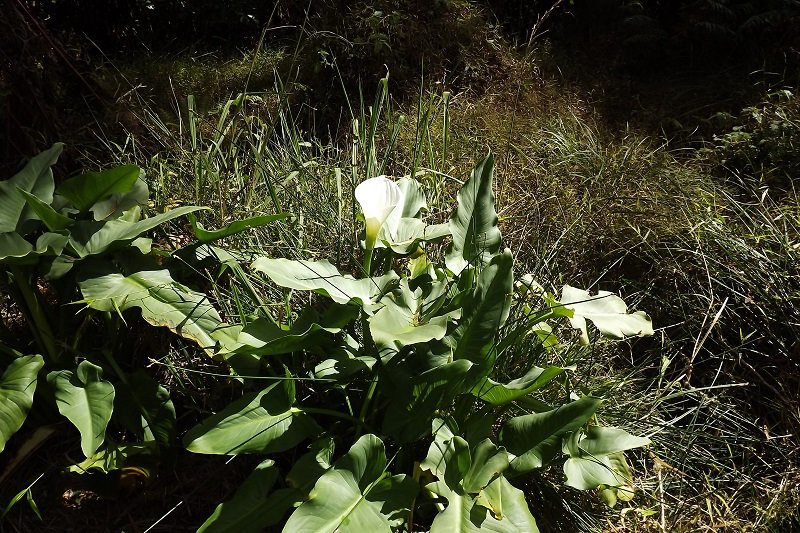
Well then, let us hit the road, more precisely the only road which goes across Reunion from west to east. We drive by Le Tampon, then Plaine-des-Caffres, Bourg-Murat and start winding down the east right after the Col de Bellevue at 1606m (4818 feet) high. It's a little chilly, isn't it ? We soon turn left at the Plaine-des-Palmistes entry and hit a smaller road towards the Bébourg-Bélouve forest where I took you once or twice previously for botanical hikes and orchid discovering. As a matter of fact this is one of the best-protected part of the island, isolated inland and guarded by sheer cliffs it has not suffered the extensive clearings which destroyed the coastal areas in term of flora and fauna. The area benefits from a high level of rain brought by trade winds and the very numerous species of ferns, mosses and related plants turn it into a giant sponge. It is famous for its mountain forests with a stunning mix of tree-ferns (all in the Cyathea genus and endemic to Reunion), Mahot trees (local name for at least five trees within the Dombeya genus) and Tan rouge (Weinnmania tinctoria). As the hike is at about 1500m we will enjoy the imposing 'tamarin des hauts' or Acacia heterophylla which was recently introduced to you in this article. This means a rather low forest (7 to 12m, 21 to 36 feet) as those trees tend to uproot and lay on the ground while continuing to grow.
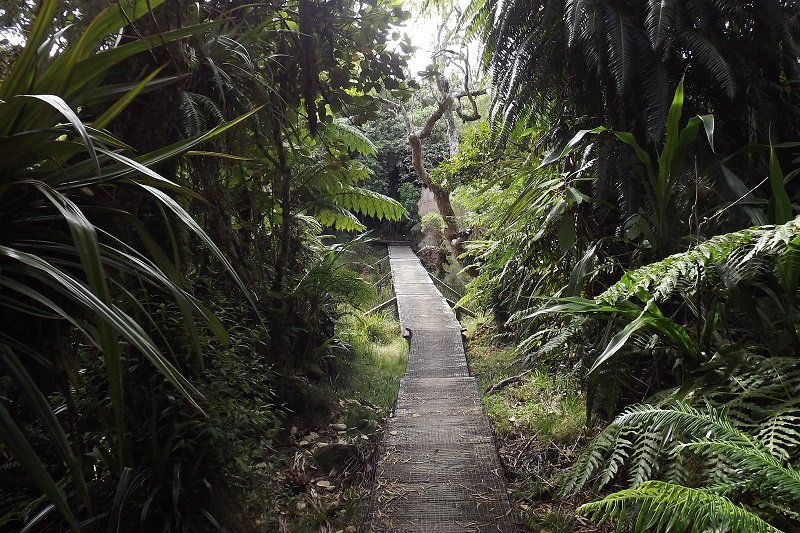
We have now reached the parking place where we leave the cars and take out our hiking paraphernalia. It is not a strenuous walk but comfortable shoes are always the best choice. Before entering the trail itself we have to walk to the ONF self-service cottage where there is a tiny museum concerning the Acacia heterophylla and its various uses. I guess we can now start walking if everyone is ready? This path used to be quite rugged - it goes through several mushy parts where walkers would plunge ankle-deep to knee-deep in mud, getting shoes sucked off or ending in a full-scale mud bath which is not always welcome no matter if it supposedly is beneficial for our skin's health. So the ONF has gone through serious works and set up on most of the trail large pieces of logs secured to the ground and covered with wire mesh so that even wet and muddy soles would not slip, we therefore benefit of a rather solid ground and can enjoy the flora as we do not have to keep scanning the soil for traps and natural snags.
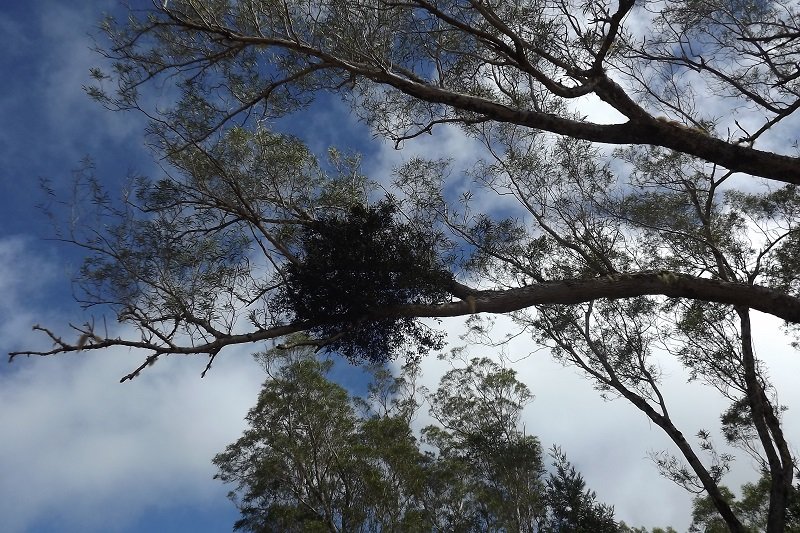
Right after the sign with the trail map you can see a nice blooming white flower, Zantedeschia aethiopica known as arum lily or calla lily. You probably have seen it growing in river beds and gullies along the road through the forest, although a definitely beautiful and valued plant it is nonetheless one of the many invasive species taking over endemic flora. It was first grown in gardens as ornamental but has soon escaped in the wild and is nowadays strongly established to the point that it can be mistaken as original local flora. We will meet several other species such as fuchsias which have the same historical background. Now just take a look at those tree-ferns compared to the hikers passing underneath, the latter look like gnomes in a fairy tales (this is probably the first time you see gnomes with back-packs, I bet!).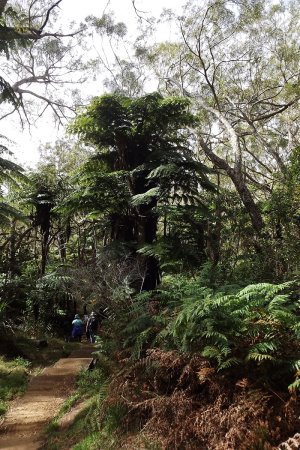 These ferns can live up to one hundred years and reach a height of 10m (30 feet), no wonder dinosaurs could feed on them (but don't panic, no dinos are here!). And as for ferns, this is the prime place to discover a great many species, as there are some 250 different ferns identified on the island and probably a few more still to be found. Many are epiphytic, some are terrestrial and it is a common sight here that the long stipe of a tree-fern covered with eight or ten other species all fighting for space. Look at this small whitish flower growing at the end of a climber, I am sure it will look familiar to many of you. Of course it does, clematis are grown in many gardens throughout the world and are part of temperate flora in Europe, America, Asia, Australia, and this one is indigenous to Reunion, Mauritius and Madagascar, Clematis mauritiana is not that showy but it is one of the few indigenous lianas we have here!
These ferns can live up to one hundred years and reach a height of 10m (30 feet), no wonder dinosaurs could feed on them (but don't panic, no dinos are here!). And as for ferns, this is the prime place to discover a great many species, as there are some 250 different ferns identified on the island and probably a few more still to be found. Many are epiphytic, some are terrestrial and it is a common sight here that the long stipe of a tree-fern covered with eight or ten other species all fighting for space. Look at this small whitish flower growing at the end of a climber, I am sure it will look familiar to many of you. Of course it does, clematis are grown in many gardens throughout the world and are part of temperate flora in Europe, America, Asia, Australia, and this one is indigenous to Reunion, Mauritius and Madagascar, Clematis mauritiana is not that showy but it is one of the few indigenous lianas we have here! 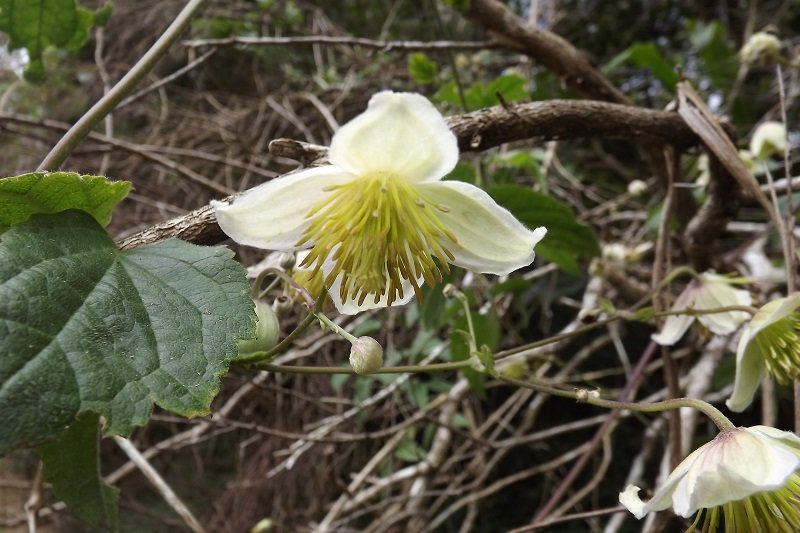 If you now raise your camera lens you can see on a large Acacia heterophylla a ball of deep green shade growing on a branch, looking like some mistletoe you may have on your apple tree in the garden. Well indeed, this is one of the rare parasitic plants found on the island, Viscum triflorum belongs to the Loranthaceae family just like European and American mistletoe species. Well, keep your head tilted, this is
If you now raise your camera lens you can see on a large Acacia heterophylla a ball of deep green shade growing on a branch, looking like some mistletoe you may have on your apple tree in the garden. Well indeed, this is one of the rare parasitic plants found on the island, Viscum triflorum belongs to the Loranthaceae family just like European and American mistletoe species. Well, keep your head tilted, this is 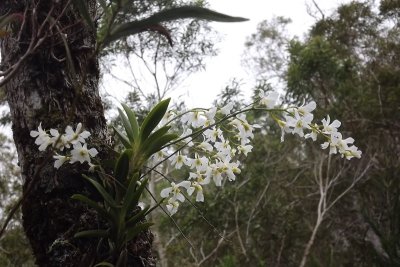 worth it! Past the mistletoe, some five meters higher on the right there is a magnificent orchid in full bloom, you will need a telephoto lens to take clearly focused pictures, but I will climb the tree (you know how I love this!) and take closer shots for us. The color is not stunning but still this pure white is somewhat surreal in this full green world and an orchid bloom in full winter in not common either. This beautiful epiphytic orchid is Beclardia macrostachys, a species found in the Masca
worth it! Past the mistletoe, some five meters higher on the right there is a magnificent orchid in full bloom, you will need a telephoto lens to take clearly focused pictures, but I will climb the tree (you know how I love this!) and take closer shots for us. The color is not stunning but still this pure white is somewhat surreal in this full green world and an orchid bloom in full winter in not common either. This beautiful epiphytic orchid is Beclardia macrostachys, a species found in the Masca
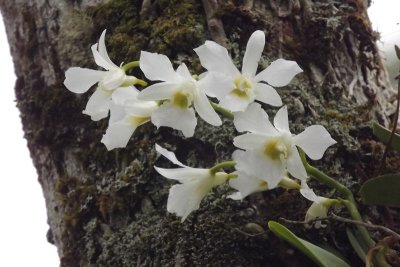
reignes and Madagascar. As a matter of fact the genera Beclardia comprises only two species, the other one being B. grandiflora found only in Madagascar. All right, back to the ground and the trail, the view on the surrounding mountains covered with lush growth gives an idea of how strenuous a walk off trails could be, instead of a couple hours the journey would take a couple days !
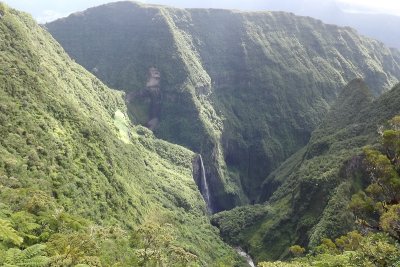
Ah, we are getting to the goal now, hold your breath and keep your eyes open, here is the Trou de Fer all the way down, pretty impressive to say the least. As it is already past noon we might as well take advantage of this wooden structure to have our picnic; it will be warmer and less humid than within the forest. We still have ample time to enjoy the view and the tasty sandwiches I brought over, then we can relax in the sun before walking back to the car and we will very certainly see some more amazing plants we missed on the way!
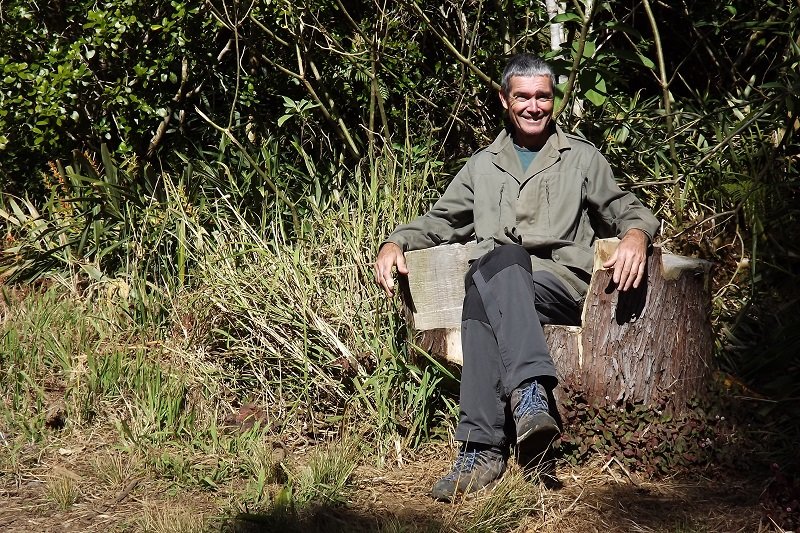
Copyright © www.100flowers.win Botanic Garden All Rights Reserved